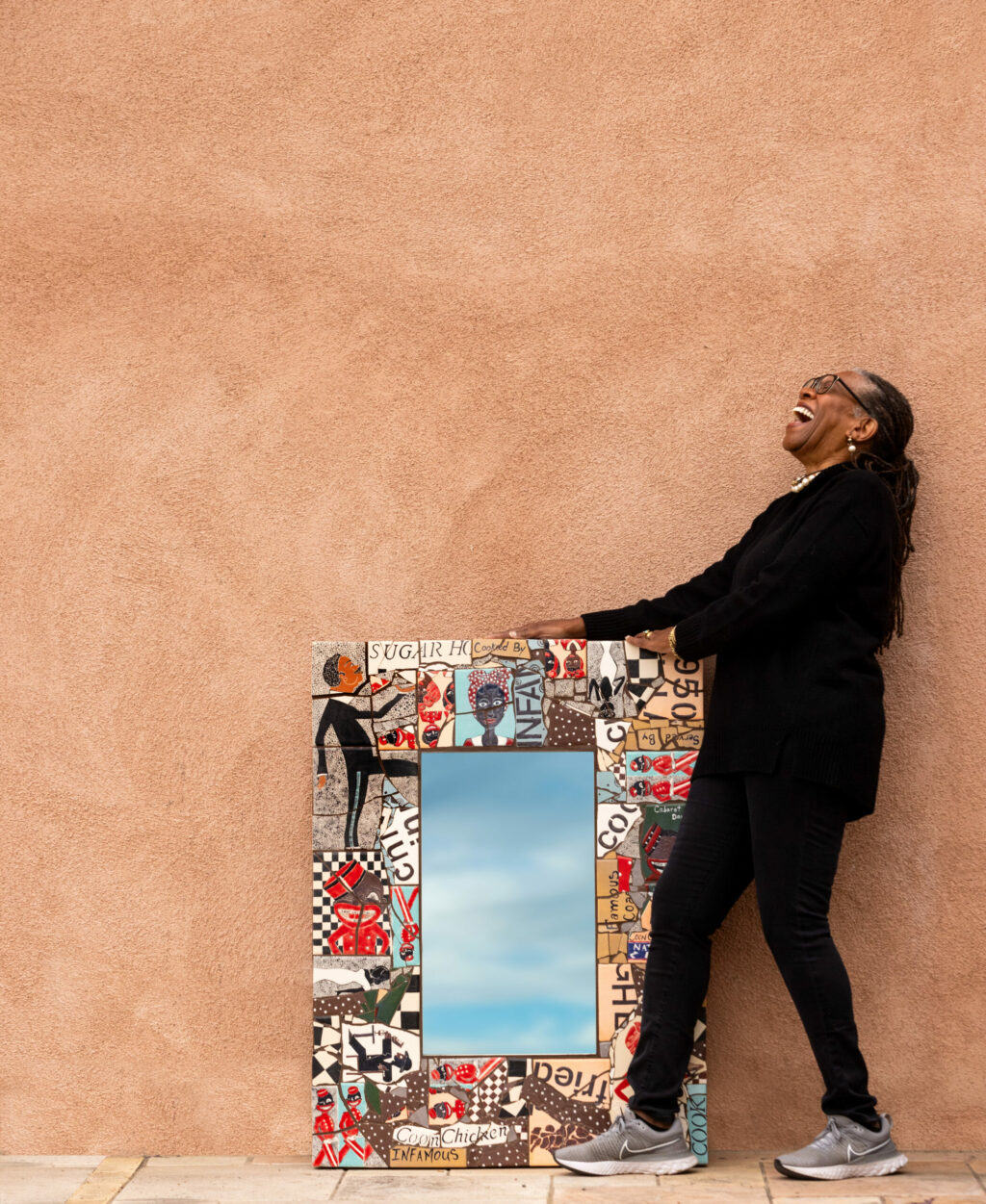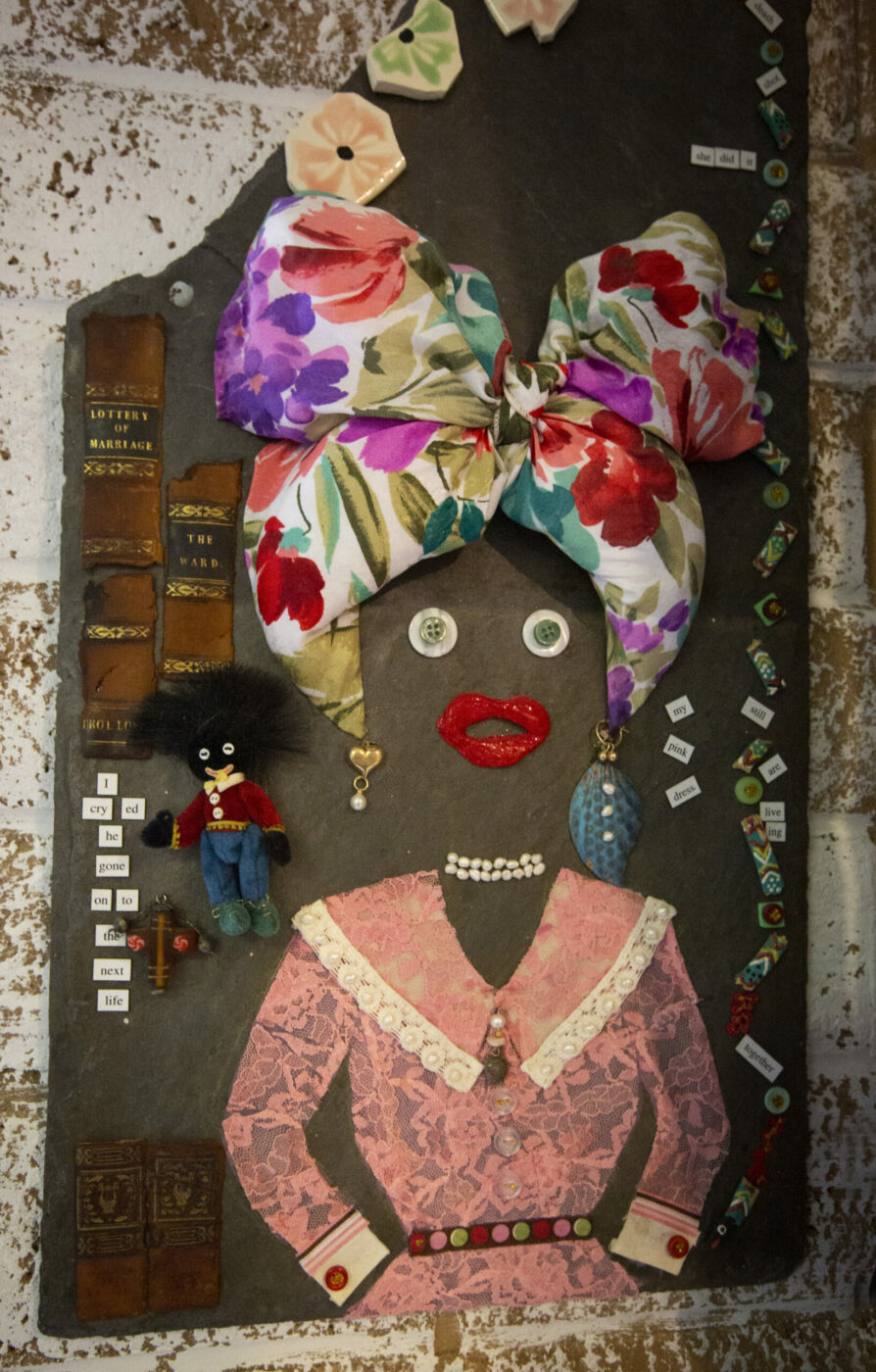Artist Rose Hill uses targeted examples of historically racist Black imagery to spark conversation and start the healing process.
“I think the universe picked me, as a Black woman, to express art this way,” Hill says. “Because a space needs to be made for this. It’s a part of our history. And it can be done in a palatable way. And the only way I think it would be accepted is if it was a Black artist doing it. Because Black folks will never trust anyone else to do it.”
The Rose Hill Art Gallery, located near Sonoma on Fremont Drive in Schellville, pops with color, whether it’s the bright, playful figures in Hill’s “Little Colored Girls” ceramic plate series, made famous by Oprah Winfrey, or the clever use of fabric in her “Spooks” series of ancestor portraits. Her sensitive pieces work to ensure we never forget a time when images of intolerance and pain for Black Americans were commonplace—and challenges viewers to look at themselves in the mirror, both literally and figuratively, and learn from what they see.


Moment of inspiration
When I first started, it was with magic markers on paper plates. I would paint the whole thing with magic markers. I’d draw women with head rags and all kinds of faces. Everywhere I went, I had my bag with blank paper plates. At outdoor festivals, I would have them with me, and people would say, “Can I have it?” And I started signing them and acting like they were something. And then I thought, I’m gonna get me a kiln and really make some plates. And that’s what I started doing.
The Oprah experience
My sister Maxine Jones and her band En Vogue were on the ‘The Oprah Winfrey Show’ several times. One time, Maxine took her a teacup I made as a gift, and Oprah fell in love. Then Gayle [King] called and commissioned me to do a dinner service for 12 people. It was so overwhelming, because I wasn’t even good at what I was doing yet. I could paint, but I was just teaching myself how to fire and glaze. After I was on her show in 1999, around 5 million people came to my website, and I got physically ill. I tried to block it out. It was wild.
Learning from bigotry
We all have baggage associated with this imagery. We’re Americans. What we choose to do with that is something else. Because we all have to work through whatever we have to work through. But I think what I’m doing is medicine. We are supposed to talk to each other. That’s how we heal, by talking about things. If it goes away completely, we won’t talk about this stuff.
Rose Hill Art Studio, 75 Fremont Drive, Sonoma, rosehillart.com










